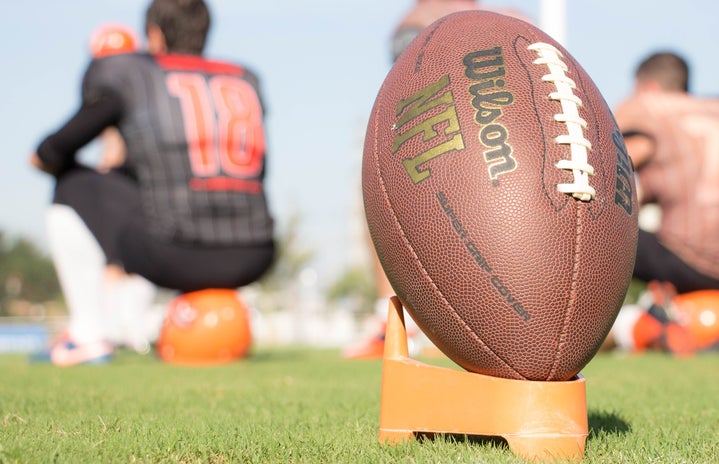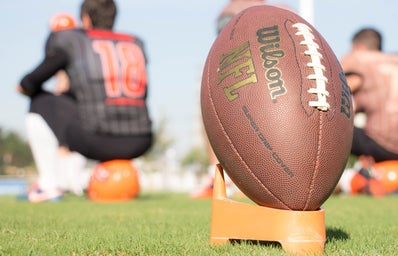Growing up, I always loved watching the show “Dallas Cowboy Cheerleaders: Making the Team” with my mom. With brownies and comfy blankets in hand, we would practice along to some of the routines, and it lowkey made me dream of being a professional cheerleader.
However, after watching “A Woman’s Work: The NFL Cheerleader Problem,” I realized that all of the sparkly uniforms disguised a bigger issue: the pay gap between NFL players and cheerleaders.
For instance, the average salary of an NFL player was around $420,000 while for an NFL cheerleader it was $1,250. Since lawsuits starting in 2014 from cheerleaders versus their teams, it has come out that some make as little as $5 an hour for mandatory practices, game appearances and more. Typically, cheerleaders report only making $75 to $150 a game. These statistics are even worse considering the amount of time put in. Cheerleaders typically spend 30 to 40 hours a week dedicated to the league, sometimes even reporting 60 to 70 hours per week.
You may be wondering: how has this gone unquestioned for so long? After all, cheerleaders have been paid this abysmally, or not at all, for decades. To understand this part, we have to dive a little bit into NFL cheerleading history. According to Yu Gu, the director behind “A Woman’s Work,” the first NFL cheerleaders volunteered to cheer for their team and community because of their love for dance.
Although, this was before the NFL was as big as it is now. In 2017, the NFL brought in over $8 billion. How can a corporation that brings in this much money ethically justify paying cheerleaders this little, especially considering that broadcast time dedicated to solely cheerleaders generates over $8 million annually?
Instead of addressing its involvement, the NFL has cast the responsibility of pay onto individual franchises, despite the NFL using cheerleaders in promotional materials and for further promoting teams. Additionally, the league justifies paying below minimum wage on the fact that cheerleaders aren’t employees, for they are classified as “independent contractors.”
To put this in perspective, NFL mascots are classified as employees and make $75,000 annually. If we look at these differences objectively, why is there such a wide gap? After all, both roles wear costumes and perform to entertain the crowd; it’s not like you see Billy Buffalo out on the field making tackles.
The ability to train long hours, have to physically stay within five pounds of your first weigh-in, pay for hair and nails out of pocket, and attend all functions or face a penalty fee are all for the love of the game. All cheerleaders are required to sign a contract once they join the squad that they have to either be employed full-time, be a student full time or be a stay-at-home mother.
Most cheerleaders report not doing it for the money—instead, they see it as a way to keep dance in their lives and perform in front of large audiences. While that is perfectly fine, why is an activity that takes up the hours of a full-time job, and ultimately resulting in a net loss of income for most cheerleaders, still being reduced to a ‘hobby’? I don’t know what kind of hobbies you all engage in, but mine doesn’t require me to sign contracts that make me liable for not engaging in it or prevent me from pursuing other opportunities that could make me more money. Even if we were to keep the hobby title, that doesn’t negate the fact that NFL cheerleaders should be fairly compensated for their performances considering the revenue they generate. After all, the cheerleaders are already getting paid for each game/performance, so it has already ethically been decided that they need to be paid for their work. If anything, the league is using cheerleaders’ love of dance and supporting their team as an excuse for paying cheerleaders inhumane wages.
My argument thus far doesn’t even include the harassment NFL cheerleaders face from coaches, representatives and even the league itself. For instance, cheerleaders from the Buffalo Bills have shared how they had to undergo “jiggle tests” by doing jumping jacks in front of management to prove that they were fit enough to participate in that week’s game.
Additionally, cheerleaders often have to face sexual harassment from fans and are instructed to “thank them for their support” and walk away, sometimes not encouraged to report the incident. Cheerleaders are also held to standards under their contract that dictate their appearance and social media presence. This was the case when Bailey Davis was fired from her position as a cheerleader for the New Orleans Saints after posting a picture in a bodysuit, despite football players having no similar rules.
Cheerleading has come a long way since the first squad took the field in the NFL in the 1960s; however, the NFL’s viewpoint of cheerleaders has not. As I write this on International Women’s Day, we must continue to advocate for those who raise their voices against mistreatment and never settle for less than we deserve. Pom-poms or not, we all deserve a wage that is equitable to the work we put in and to be treated with respect and dignity; maybe the NFL should take some notes on that.


